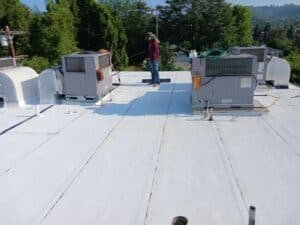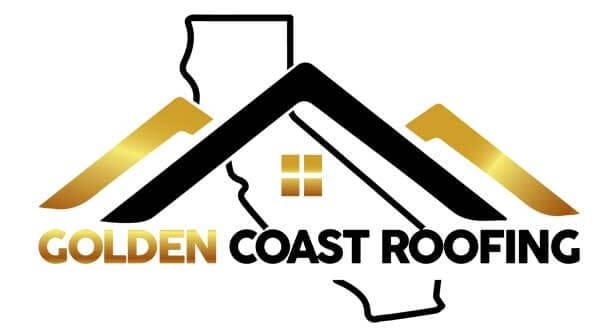The two most common styles of roof covering are horizontally flat and vertically pitched. Initially, flat covers predominated in the southern Mediterranean and Asian nations, whereas pitched coverings were found in northern European nations.
Table of Contents
ToggleThis is easily explained: The covering must offer trustworthy house waterproofing and be able to handle the increasing loads. In warm, southern nations, where people typically choose the least expensive choice for building protection, this issue is less severe. A pitched rooftop is a need in the northern nations, even if it is more costly to construct.
The benefits of a flat roof
Up until recently, low-rise structures only had a classic slope, mansard, or hip roofing; flat roofs were only used on industrial buildings or multi-story residential properties. However, advancements in engineering and the market for building supplies have made it easier to use horizontal coatings in the construction of individual homes.
It is simple to add a second or third story to a private residence or cottage in place of the loft and utilize the extra space for a recreation room, a sleeping area, or a small greenhouse.
Main flat coverings have the advantages of being straightforward and affordable. Please contact our team of LA roofing experts for a full quote tailored to your needs! Or simply call us today on 213-657-4242!
Most suitable materials for flat roofs
The materials utilized for horizontal covers should offer the entire structure top-notch waterproofing. Today’s flat roof materials must meet the following criteria:
- Sturdiness
- Lightweight
- Chemical defense
- Heat protection
- protection from sun rays
- Biostability
- Fire-resistance
- separation from sound
- enduring caliber
- Cost-effectiveness
- Adaptability in usage
Flat coverings are made up of a variety of components that reliably waterproof homes and keep their microclimates at their ideal levels. These consist of:
- dependable installation, tight connections, and further waterproofing using primers and mastics
- system of bituminous coating
- drainage technique
- PVC barrier to producing a trustworthy and long-lasting waterproofing barrier.
In this way, traditional bitumen, paper, and cardboard roofing goods are incomparably inferior to contemporary parts.
Flat roof designs
There are three fundamental kinds:
- Single-ply roofing material (for example, EPDM)
- Bitumen modified for a coating
- Built-Up Roofing (BUR)
Single-ply roofing material (for example, EPDM)
The membrane rooftop, a more recent advancement in roofing technologies, is the preferred roof for commercial buildings. Single-ply roofs are formally known as elastomeric roof top membranes, based on the material.
- Neoprene (polychloroprene) (polychloroprene)
- EPDM (ethylene propylene diene monomer) (ethylene propylene diene monomer)
- PVC (polyvinyl chloride) (polyvinyl chloride)
- Sheets made from chlorinated and chlorosulfonated polyethylene
- Bitumens treated with polymers
The most popular single-ply membrane roofing material for both domestic and industrial applications is EPDM synthetic rubber, which is one of these membrane kinds. To your roofer, all you need to be able to communicate is that you want an EPDM rubber rooftop. These roofs are put to the rooftop in a single layer and are erected as thin sheet components that range in thickness from 0.030 (30 mils) to 0.060 inches (60 mils). Since they are made of artificial rubber or polymeric, they are elastic and pliable, and they can withstand some sorts of impacts and weather fluctuations easier than built-up rooftops.
There are numerous techniques to attach membrane rooftops. They can either be completely affixed to the rooftop deck or partially loosely laid and weighted down with a river rock foundation. PVC roof joints are heat or solvent welded, while EPDM and neoprene rooftop seams adhere.
PROS:
Simple to maintain
Rubber membrane leaking roofs are easily fixable for a very low cost. It is also simple and easy to locate these leaks.
Simple Installation
The huge single-layer roll of rubber membrane makes it simple for the roofing expert to handle. Additionally, you may seal the seams together without using blowtorches because of the elastic and flexible character of the material.
Defeat to Elements
Being elastic, the rubber will inevitably grow in the summertime and shrink in the winter. High heat won’t damage it, either. Additionally, rubber is inherently impact-resilient and fireproof.
Roofing made of modified bitumen
In order to replace BUR, or built-up roofing, altered bitumen cap sheet roofing was created in the 1960s. It uses the tried-and-true BUR technique while additionally including polymer-reinforced cap sheets or wears layers.
These rooftops can be constructed using a variety of methods, based on the specifications and substance chosen for the project. These construction techniques consist of:
- applied hot
- a torch was used
- applying cold
- Self-adhered
The cap sheet’s polymer material offers greater elasticity and suppleness at lower temperatures. The most often utilized polymers are styrene butadiene styrene (SBS) and atactic polypropylene (APP) (SBS). The bitumen acquires a rubber-like quality thanks to SBS.
SBS cap sheets are typically installed using hot asphalt tar or cold glue. On the other hand, the torch application approach is used to attach thermoplastic APP sheets.
PROS:
Aesthetics
Many modified bitumen roofing patterns are available that look like conventional asphalt shingle rooftops. This implies that it will be simple for you to choose from a selection of substances to complement the outside of your property, which may include areas covered with asphalt shingles.
Simple to Install
Modified bitumen roofing can be installed in a similar manner as conventional asphalt shingles. This implies that finding a provider for this job won’t be difficult.
Efficiency in Energy and Insulation
Modified bitumen roofings retain heat from the sun since of their dark color or blackness. As a result, it uses less power than conventional roof shingles like metal rooftops, which reflect this heat back into the atmosphere.
Built-Up Roofing (BUR)
The built-up rooftop, or BUR, is the ancestor of flat roofs. Built-up rooftops have long since found a solution to the low-pitch rooftop issue, which asphalt shingles were unable to handle.
A hot mop is used to apply numerous layers of a special kind of roofing felt that has been soaked with asphalt and embedded in bitumen to create built-up rooftops.
To shield the built-up rooftop component from UV rays and the elements, the upper surface of hot tar is typically covered with a wear surface made of finely broken stone grains.
PROS:
Protection Against Fire
Built-up roofing has a reputation for being more durable than alternative choices for flat rooftop materials. They offer better defense against strong winds and masses of snow. You don’t have to be concerned about damages, leaks, or breaking because they can withstand harsh weather conditions.
Built-up rooftops are particularly safe from fires since the layers are constructed of non-combustible substances. They won’t make fire more likely to start or entirely put it out.
Longevity
Due to the thick layers and waterproofing elements utilized, built-up roofing survives longer. As a result, you will invest less in rooftop upkeep and repairs.



